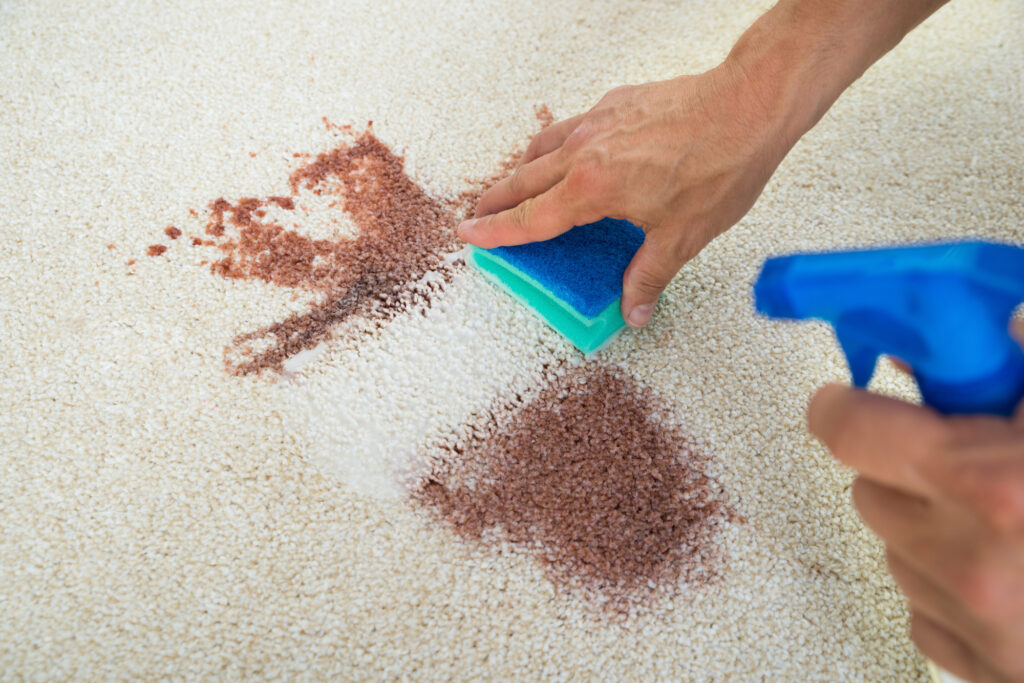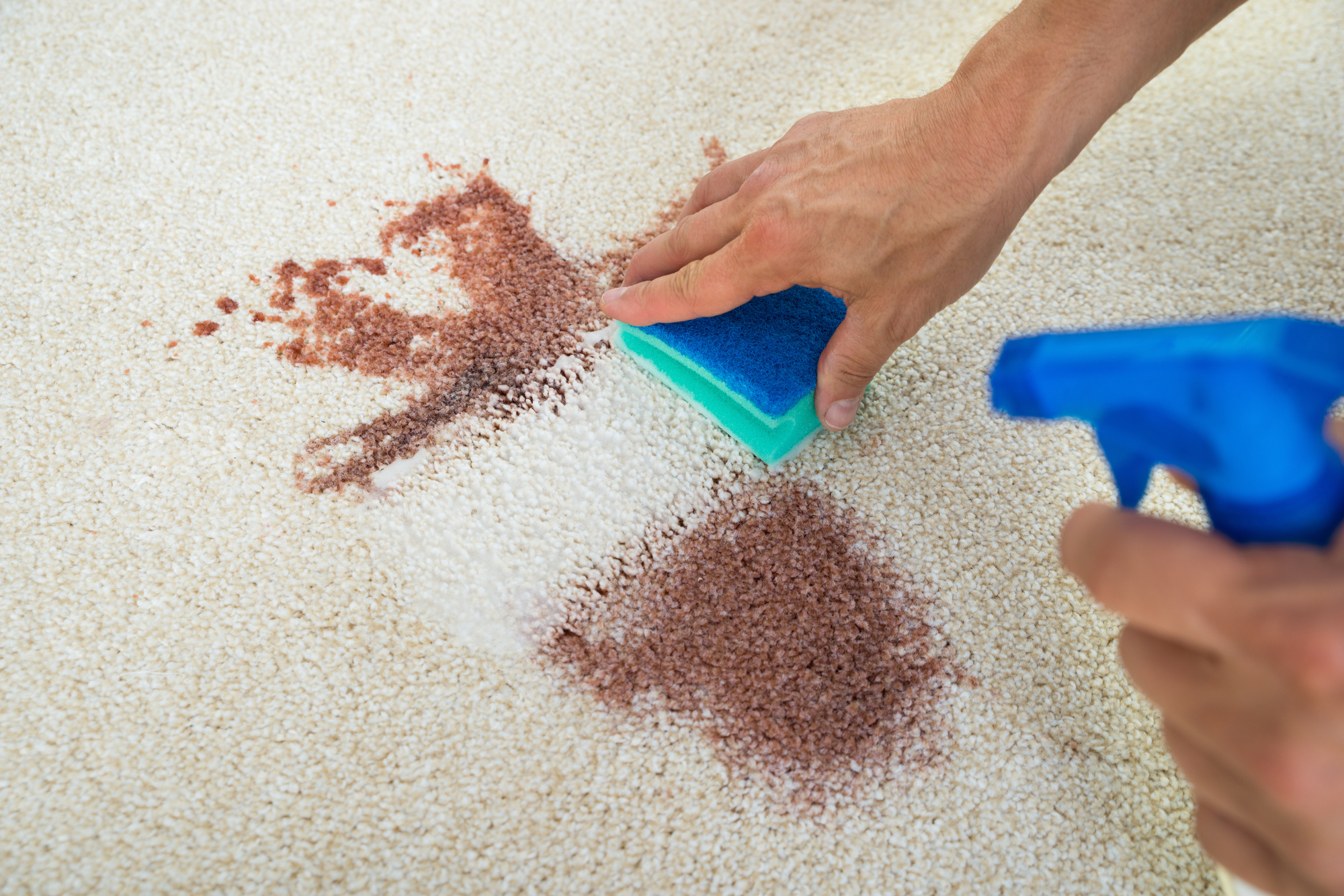
DIY Upholstery Rescue: Removing Water Stains Effortlessly
Water stains on upholstery are a common household woe. Whether it’s a spilled drink, a leaky pipe, or an overzealous cleaning attempt, these unsightly marks can quickly mar the appearance of your favorite furniture. But before you resign yourself to expensive professional cleaning or, worse, replacement, there’s hope! This article delves into the world of DIY upholstery rescue, providing you with effective, effortless techniques to banish those water stains and restore your furniture to its former glory. We’ll explore the science behind water stains, the materials you’ll need, and step-by-step instructions for tackling the problem head-on. Get ready to transform your stained upholstery into a showcase of pristine comfort.
Understanding the Enemy: Why Water Stains Happen
Before diving into solutions, it’s crucial to understand why water stains occur in the first place. Water, particularly when it contains dissolved minerals or is infused with dyes from other materials, can penetrate the fibers of your upholstery. As the water evaporates, these minerals and dyes are left behind, creating a visible stain. The severity of the stain depends on several factors, including the type of fabric, the concentration of the staining agents in the water, and how quickly the stain is treated. Understanding this helps in choosing the right approach for your DIY upholstery rescue mission.
Gathering Your Arsenal: Essential Supplies for DIY Upholstery Rescue
Successfully removing water stains requires the right tools and materials. Fortunately, most of these items are readily available and inexpensive. Here’s a list of the essentials you’ll need for your DIY upholstery rescue:
- Clean White Cloths or Microfiber Towels: These are crucial for blotting and absorbing moisture. Avoid using colored cloths, as they may transfer dye to the upholstery.
- Distilled Water: Tap water can contain minerals that contribute to staining. Distilled water ensures you’re working with the purest form of water.
- Spray Bottle: For controlled application of water and cleaning solutions.
- Vacuum Cleaner with Upholstery Attachment: For removing loose debris and drying the fabric.
- Mild Detergent (Optional): A small amount of mild, pH-neutral detergent can help lift stubborn stains. Always test it in an inconspicuous area first.
- Rubbing Alcohol (Isopropyl Alcohol): Can be effective on certain types of stains; use with caution and test first.
- Hair Dryer (Optional): For speeding up the drying process. Use on a low heat setting.
Step-by-Step Guide: Your DIY Upholstery Rescue Plan
Now for the main event: the DIY upholstery rescue process. Follow these steps carefully for optimal results:
- Assess the Damage: Before you begin, evaluate the extent of the water stain. Note the size, location, and any other potential stains or issues.
- Remove Loose Debris: Use the upholstery attachment of your vacuum cleaner to remove any loose dirt, dust, or crumbs from the affected area.
- Blot, Don’t Rub: This is a critical step! Rubbing the stain can spread it and damage the fabric. Instead, gently blot the area with a clean, white cloth or microfiber towel. Work from the outside of the stain inwards to prevent it from spreading.
- Apply Distilled Water: Lightly mist the stained area with distilled water from your spray bottle. Be careful not to oversaturate the fabric. The goal is to dilute the stain, not soak the upholstery.
- Blot Again: Immediately after applying water, blot the area again with a clean, dry cloth. Continue blotting, changing to a clean part of the cloth as needed, until the stain is absorbed.
- Repeat if Necessary: For persistent stains, repeat steps 4 and 5. You can also try adding a very small amount of mild detergent to the distilled water, but always test in an inconspicuous area first.
- Rinse (If Using Detergent): If you used detergent, lightly mist the area with distilled water to rinse away any soap residue. Blot thoroughly with a clean cloth.
- Dry the Upholstery: Allow the upholstery to air dry completely. You can speed up the process by using a hair dryer on a low heat setting, holding it several inches away from the fabric. Avoid direct sunlight, which can fade the fabric.
- Vacuum Again: Once the upholstery is completely dry, vacuum the area again to fluff the fibers and ensure a uniform appearance.
Dealing with Stubborn Water Stains: Advanced DIY Upholstery Rescue Techniques
Sometimes, the basic approach isn’t enough. For more stubborn water stains, you might need to employ some advanced techniques as part of your DIY upholstery rescue mission:
Rubbing Alcohol Treatment
Rubbing alcohol can be effective in removing certain types of stains, but it should be used with caution, as it can potentially damage some fabrics. Test it in an inconspicuous area first. If it’s safe, apply a small amount of rubbing alcohol to a clean cloth and gently blot the stain. Allow it to air dry and then vacuum.
Commercial Upholstery Cleaners
If the DIY methods aren’t working, consider using a commercial upholstery cleaner specifically designed for water stain removal. Follow the manufacturer’s instructions carefully. Always test the cleaner in an inconspicuous area before applying it to the entire stain.
Enzyme Cleaners
For stains caused by organic matter (e.g., spilled food), an enzyme cleaner can be effective. These cleaners break down the organic compounds, making them easier to remove. Follow the product instructions.
Fabric Considerations: Tailoring Your DIY Upholstery Rescue Approach
Different upholstery fabrics require different approaches. Here’s a quick guide:
- Cotton: Generally, cotton is relatively easy to clean. Follow the basic steps outlined above, but be mindful of potential shrinkage.
- Linen: Linen is also relatively durable, but it can wrinkle easily. Avoid excessive water and use a low heat setting on the hair dryer.
- Wool: Wool is delicate and prone to shrinking. Use very little water and blot gently. Consider professional cleaning for significant stains.
- Silk: Silk is extremely delicate and requires professional cleaning. Avoid any DIY attempts, as you could easily damage the fabric.
- Synthetic Fabrics (Polyester, Microfiber): These fabrics are generally more resistant to stains and easier to clean. Follow the basic steps.
Always test any cleaning solution in an inconspicuous area first to ensure it doesn’t damage or discolor the fabric. This is a critical step in any DIY upholstery rescue attempt.
Preventative Measures: Keeping Water Stains at Bay
Prevention is always better than cure. Here are some tips to minimize the risk of water stains on your upholstery:
- Use Coasters and Placemats: Protect your furniture from spills by using coasters for drinks and placemats for food.
- Be Mindful of Leaks: Regularly check for leaks from pipes, appliances, and other sources.
- Apply Fabric Protectant: Consider applying a fabric protectant to your upholstery to repel water and stains.
- Act Quickly: If a spill does occur, address it immediately. The sooner you treat the stain, the better your chances of success with your DIY upholstery rescue effort.
- Professional Cleaning: Consider professional cleaning periodically to maintain the overall cleanliness and appearance of your upholstery.
When to Call in the Professionals
While DIY upholstery rescue can be highly effective, there are times when professional help is necessary. If the stain is particularly large, persistent, or on a delicate fabric like silk, it’s best to consult a professional upholstery cleaner. They have the expertise, equipment, and cleaning solutions to handle complex stains without damaging your furniture. If you’re unsure about a particular stain or fabric, it’s always a good idea to err on the side of caution and seek professional advice.
Conclusion: Embrace the Power of DIY Upholstery Rescue
Water stains don’t have to be a permanent fixture on your furniture. With the right knowledge, tools, and a little elbow grease, you can successfully tackle these unsightly blemishes and restore your upholstery to its former glory. This guide has equipped you with the essential information and techniques for a successful DIY upholstery rescue. Remember to always test cleaning solutions in an inconspicuous area, blot gently, and be patient. With a little effort, you can enjoy beautifully clean and stain-free furniture. Embrace the power of DIY upholstery rescue and reclaim your comfortable, stylish living space!
[See also: How to Clean a Leather Couch, Best Upholstery Cleaning Products, Deep Cleaning Your Sofa]


